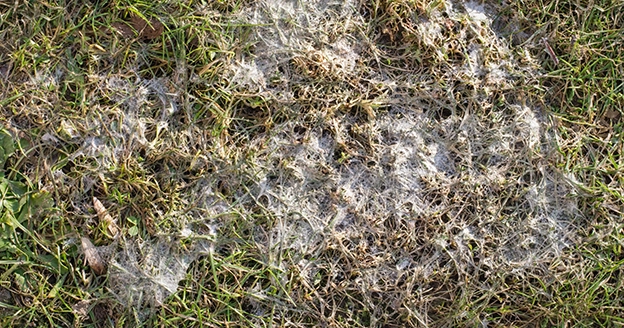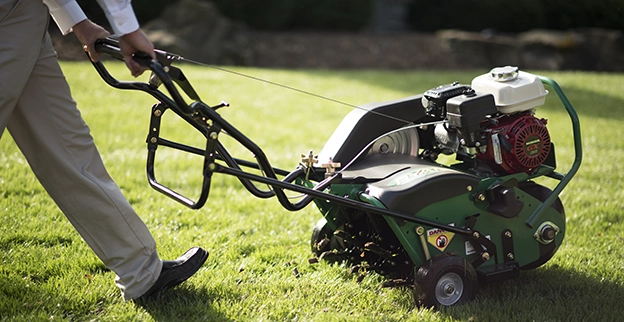Winter weather poses several challenges for grass and winter lawn care:
Frost on Lawns
Winter can bring great beauty, with crystal-like frost blanketing the grass, shrubs, and trees. But this frost makes grass blades very brittle. When your grass is covered in frost or frozen, it loses elasticity, making the grass blades susceptible to breakage. Walking or driving over frozen lawns can kill the grass. It can crush and break the delicate blades, resulting in damage and making it harder for your lawn to recover in the spring.
Dealing with Snow Coverage: Protection and Recovery
Snow mold is a fungal lawn disease that strikes during the cold months of the year, particularly during extended snow cover. Snow mold prevention is a critical component of winter lawn care. Snowed-under lawns are susceptible to two types of snow molds: gray snow mold (Typhula blight) and pink snow mold (Microdochium patch). Snow mold is the turf disease responsible for whitish-gray or pink lawn patches that are revealed when the snow melts. Although grass may not grow in the winter cold, that’s when snow mold spores become active.
When conditions are freezing, or near freezing, snow mold thrives. Snow cover is required for gray snow mold to grow, but pink snow mold may form with or without snow cover. Both typically form radiating circular patterns of damage ranging from 3” to 12” in diameter. These small patterns may merge into larger areas of damage. You may notice an outer ring of white mycelium resembling cobwebs, which is the early growth stage of these molds. The inner circle will appear pink with pink snow mold and remain whitish-gray with gray snow mold. You may also find tiny black sclerotia masses in cases of gray snow mold.
Ice Melting Products
Snow and ice on walkways and driveways can threaten your family’s safety, but some ice-melting products can damage the health of your lawn. Sodium found in rock salt and other products draws the liquid out of the grass plants, causing them to turn brown and die. Calcium chloride or a magnesium mix is just as effective at melting ice without damaging your lawn.




